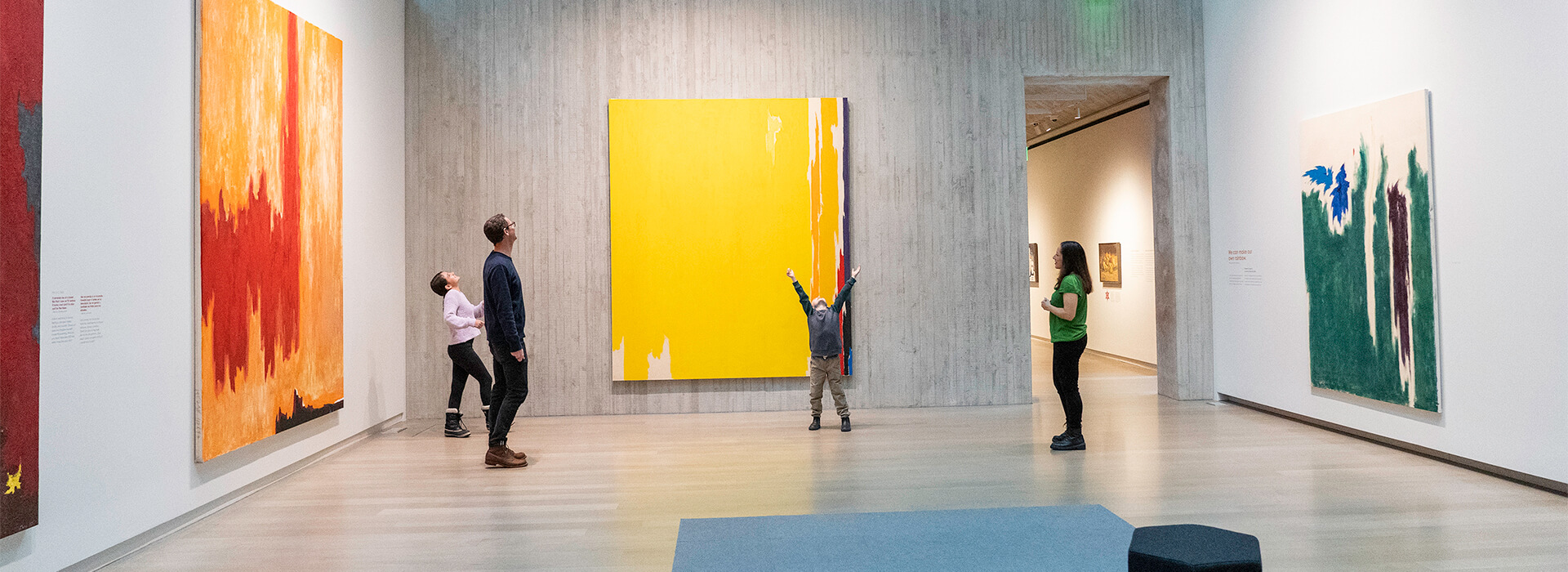The Clyfford Still Museum allows visitors the unique experience to understand the legacy of Clyfford Still. He had a unique artistic vision and was unwilling to compromise it for money or recognition. As he evolved as an artist, Still’s works transitioned from outdoor scenes, people, and machinery to more abstract shapes, colors, and lines to express an idea or feeling. He painted on huge canvases to invite viewers to experience and be absorbed by them. Still did not name his works because he wanted people to make their own interpretations.
Follow your own path to learn more about Still, his art, what inspired him, and see things from a new perspective. Discover more about the Museum and its unique architecture; explore open job postings and volunteer opportunities; read recent news and press; and learn more about our DEAI initiatives. We want to hear from you, contact us anytime!
Museum History
Still wanted the majority of his work to remain together because he strongly believed an artist’s work is best understood when it is experienced in large groups or—better yet—in its entirety. To Still, every single artwork plays an important role in the story of his artistic development and vision; every work leads to another, they are all interconnected, and together, they ultimately form one grand life statement.
After the artist’s death in 1980, the Clyfford Still Estate was sealed off from public and scholarly view. His will stipulated that his entire collection be given to an American city willing to establish a permanent museum dedicated exclusively to the care and display of his art. This guaranteed his work would remain together for people to experience in the way he envisioned: united in one place and without the distraction of other artists’ work. Around twenty American cities contended to receive the internationally-renowned Still collection. Finally in 2004, Still’s wife, Patricia, chose Denver to receive the collection after then-Mayor John Hickenlooper visited her home and agreed to the will’s stringent terms. In 2005, Patricia also bequeathed to the city her own estate, which included select paintings by her husband as well as his complete archives.
In 2006, the newly formed Clyfford Still Museum secured a parcel of land within Denver’s Civic Center Cultural Complex immediately west of the Denver Art Museum’s then-under-construction Frederic C. Hamilton Building. Later that year, the board selected Allied Works Architecture, led by Brad Cloepfil, for the Museum’s design.
The Clyfford Still Museum broke ground on its new home in December 2009 and opened its doors to the public on November 18, 2011, reintroducing the life and work of one of America’s most significant yet least understood artists. When the Museum was completed, it received over 830 paintings, 2,300 works on paper, over 23,000 photographs, and thousands of archival objects compiled by the Stills.
Entrance Level
Begin your visit by watching a brief video in the lobby for an introduction to the Museum. After your visit, stop in the Museum Shop for a memento of your visit. The displays, videos, and interactive features on the first floor will deepen your understanding of Still, his works, the abstract expressionist movement, and conservation efforts. Glimpse what goes on behind the scenes in the painting storage and conservation areas.
Upper Level
The upper level includes nine exhibition galleries showcasing Still’s art. To view the works chronologically, start in the first gallery and move counterclockwise through the galleries. Learn more about the exhibition on view.
Create your own artwork and experiment with an assortment of art materials in The Making Space, the hands-on creation studio for people of all ages.
Enjoy a moment of contemplation, multi-sensory artist interventions, and special garden plantings inspired by Still on the two outdoor terrace spaces in the southwest and northeast corners.
